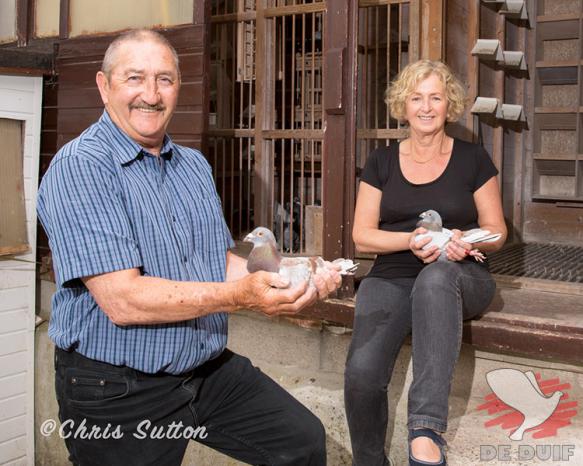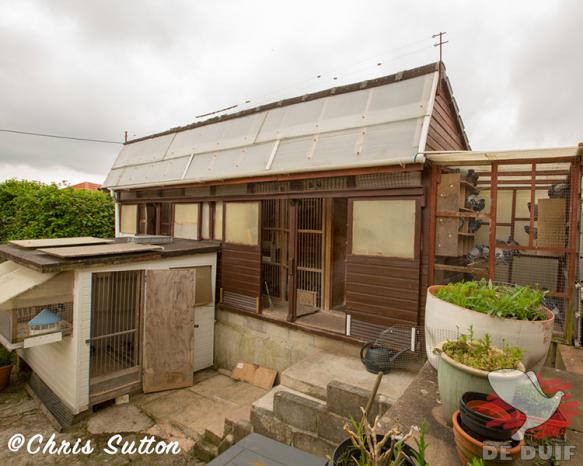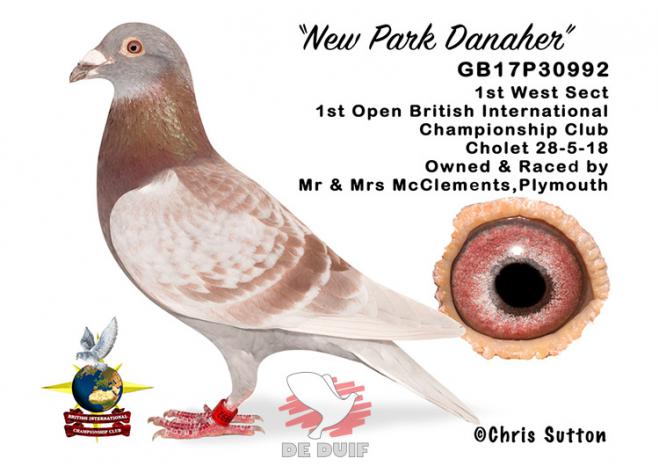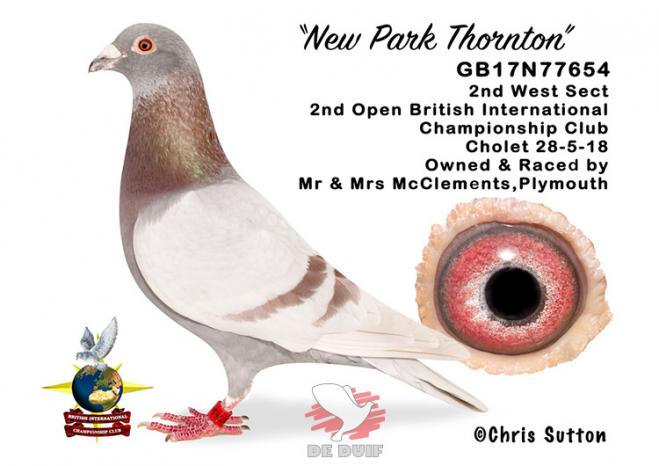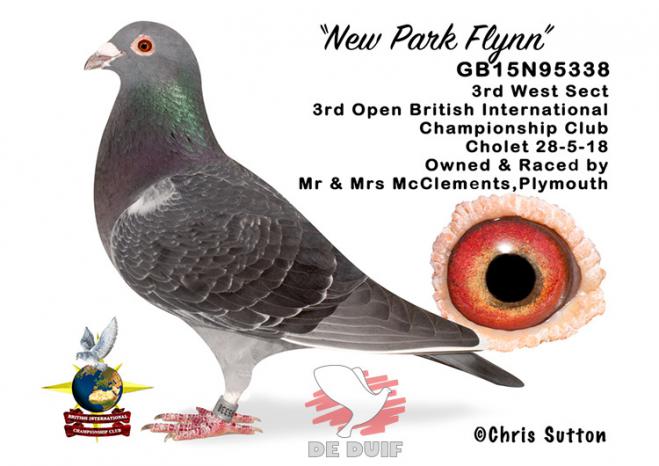Liefhebber:
Retirement for John McClements, a new Motorhome for weekends away with his wife Gill and a change from inland sprint racing to channel racing. These were some of the ingredients for a successful race with the British International Championship Club from Cholet wining 1st 2nd 3rd 5th and 7th Open.
John and Gill live in a small village just outside Plymouth and had been racing a successful sprint team of Janssen based pigeons before deciding to concentrate on the longer distance races with Tarbes and Barcelona as their main aim. When John retired he wanted a more relaxed approach to his pigeons, so he decided to acquire some long distance pigeons and went along to a Crowley and Green sale to purchase two cock birds he had seen that were bred by Andrew Parsons of Salisbury.
The husband and wife team had followed Andrews outstanding results from 550 miles and as he also attended the sale, they approached him to ask if he could let them buy two hens from his loft. He bred them two youngsters and as his family of pigeons contained the bloodlines of years of long distance racers, they knew they were obtaining the right tools for the task ahead. Their baseline was further enhanced by two youngsters from Bill Stribling, when John would tease “are my two youngsters ready?” at the BICC marking station. To his surprise, one evening two months later, he received a phone call from Bill who said they could have two youngsters out of his Barcelona cock, they accepted without hesitation and drove up to Weston Super Mare to collect them the very next day. For many years fanciers would have seen the name W Stribling on many long distance results as Bill is fanatical about long distance racing.
John grew up surrounded by old time fanciers in Derry, Northern Ireland and knows the value of good local bloodlines. To this end they will go to the BBC young bird sales because as Gill said “you know you are getting from the very best long-distance fanciers in the area, local bloodlines winning at the distance are often overlooked and can be much quicker to acclimatise to UK racing than continental birds”
When taking a trip in their Motor Home they will drive to West Bay or Portland, some 70 miles for the birds, releasing them two or three at a time and cross checking the liberation times to their arrivals on the ETS when they got home. The results have surprised them as sometimes the last ones to go, would be amongst the first birds home. They are convinced that if their pigeons are to break for home from a long distance national race, they should be used to flying in small groups over the sea and given that their first three birds landed together taking 1st 2nd and 3rd Open British International Championship Club, maybe they are on the right track as they raced each other right to the landing board, just as they would do from training.
Not having a lot of room for a big set up in their garden, the couple race the roundabout system, as they find it easier to keep a decent sized race team that way. The main loft is set higher than the hens loft as the ground level drops some six feet in a short distance. This allows an ingenious method of switching the hens over by lifting a trap door in the main loft and driving them through into the lower loft for separation.
When they are paired they are allowed to rear two youngsters but are separated well before going to nest the second time. The youngsters are removed and although younger in age than most would wean, they begin to feed themselves sooner than if they were left longer with the parents. They feed in the nest boxes using clay pots so when the youngsters go over to their new section, these clay pots are placed all around the floor for them and they soon begin to feed themselves.
Old birds are then flown out twice per day, hens before the cocks, which gives John chance to sit in his garden chair watching how they exercise. He says the hens fly the best around home, with the cocks up and down from the loft but if they race well at the weekends he is not worried by this at all. He has a more relaxed approach than previous years although a flag is used early season to get them going.
When getting ready for basketing John will lift the trap door and let them all run together for a while and he says it is chaos with sometimes 4 or 5 birds in one nest box. But as he has chosen his entries the night before, he just checks them over once more and sends them well motivated.
Their local club closed down and with them being out of the radius of the next nearest, it left them without a club to race in, and although they could send as trainers they would not be on the result. Not feeling this was fair the members decided to open the radius to let them compete and both Gill and John commented on how friendly the atmosphere was amongst the members. On Sunday evening at clock check they received a standing ovation and the champagne was passed around. A celebration of National winning performances that has become a tradition in the club, as there are now nine national wins credited to its members.
Our President John Tyerman wrote;
Yet another very difficult weekend for the race Controllers of all organisations racing from France. For the BICC Cholet National, JT was away in France en-route to Bergerac on holiday, but agreed to speak to both Mark and Steve to give a weather update from Le Mans on the Saturday morning. Although the French weather was good on Saturday it soon became clear that the English Channel was virtually fogbound all day and no race was possible from Cholet, so a holdover was called. Steve our weather expert remained in close contact with Mark and also our Convoyers Trevor and Steve at Cholet, and he was confident that a race was possible for the Sunday. Birds were liberated at 6-30am on Sunday 27th May, into good weather and a light SEW. A fairly testing race ensued and despite the holdover returns seem to have been reasonably good. Well done to our winners John & Gill McClements. Steve Appleby also commented; “The main improvement from Saturday was the overall increased visibility especially in the channel. The various web cams located along the French coast gave views looking out to sea of approximately 5 miles. The image captured from the camera at the Octeville yacht club situated on the Cherbourg peninsula shows the good visibility. The satellite image of the flight path from Cholet to the channel identified broken cloud and blue skies all the way. Winds generally were light over France from the south which was sustained up to the French coast line. Over the channel they became south, south easterly, but changed to more easterly direction over the English mainland (see chart). So with all the relevant weather data analysed a decision to liberate was made. Our convoyers Trevor and Steve were happy to see the B.I.C.C. convoy leave Cholet at 06:30 hours in one batch heading north under broken cloud and blue skies.
News and views to Chris Sutton 01530 242548.
Auteur:

